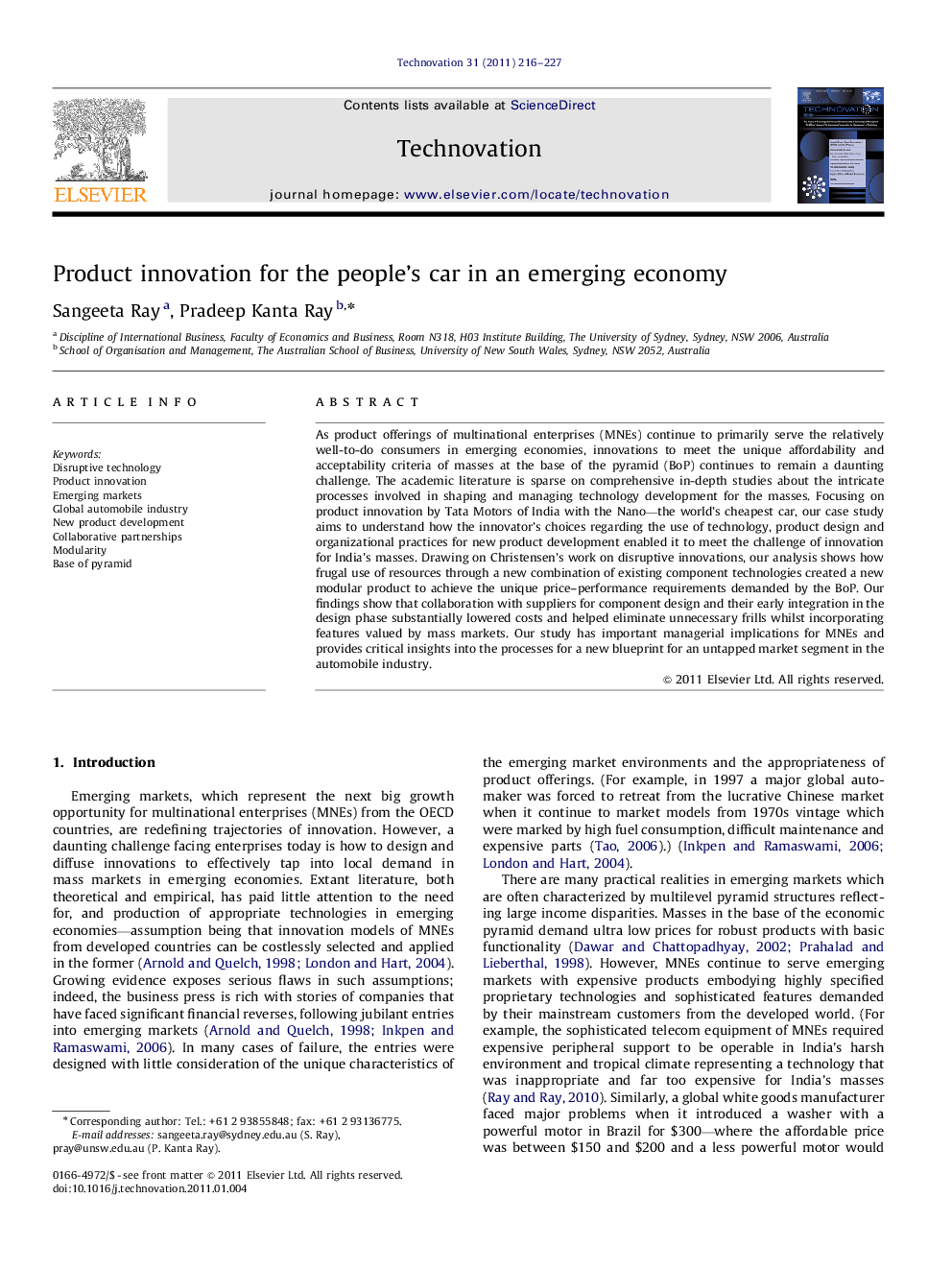| Article ID | Journal | Published Year | Pages | File Type |
|---|---|---|---|---|
| 1022262 | Technovation | 2011 | 12 Pages |
As product offerings of multinational enterprises (MNEs) continue to primarily serve the relatively well-to-do consumers in emerging economies, innovations to meet the unique affordability and acceptability criteria of masses at the base of the pyramid (BoP) continues to remain a daunting challenge. The academic literature is sparse on comprehensive in-depth studies about the intricate processes involved in shaping and managing technology development for the masses. Focusing on product innovation by Tata Motors of India with the Nano—the world's cheapest car, our case study aims to understand how the innovator's choices regarding the use of technology, product design and organizational practices for new product development enabled it to meet the challenge of innovation for India's masses. Drawing on Christensen's work on disruptive innovations, our analysis shows how frugal use of resources through a new combination of existing component technologies created a new modular product to achieve the unique price–performance requirements demanded by the BoP. Our findings show that collaboration with suppliers for component design and their early integration in the design phase substantially lowered costs and helped eliminate unnecessary frills whilst incorporating features valued by mass markets. Our study has important managerial implications for MNEs and provides critical insights into the processes for a new blueprint for an untapped market segment in the automobile industry.
Research highlights▸ Drawing on the concept of disruptive technologies we provide a new framework for product innovation for emerging mass markets. ▸Key components of this framework include modularity, architectural innovation and collaborative partnerships. ▸ We apply this framework to understand product innovation by Tata Motors of India for the Nano, the world's cheapest car. ▸The case provides critical insights into the frugal use of resources in the innovation processes for an untapped market. ▸ The study has important managerial implications for the global automobile industry.
